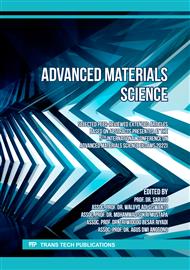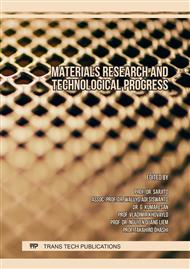p.33
p.41
p.49
p.55
p.63
p.73
p.83
p.93
p.99
The Effect of Finishing Allowance and Milling Methode on Surface Roughness in the Finishing Process of Al5052 and Al7075
Abstract:
Experiments with variations in the finishing allowance and different milling cutting methods (climb milling, conventional milling) were carried out on aluminum series 5052 and 7075 to investigate the effect of thickness finishing allowance and milling method on the surface roughness of the finishing process. The finishing process with variations in the finishing allowance of 0.05/ 0.1/ 0.15/ 0.2/ 0.25 and 0.3 mm is carried out with a feed rate of 150 mm/minute, fpt 0.0187 mm, spindle speed 2000 rpm, cutting speed 62.8 meters/minute and depth of cut 25 mm using conventional milling and climb milling methods. The experimental results show that the surface roughness with the climb milling method is smaller than the conventional milling method in all variations of the finishing allowance thickness and on the type of material (Al5052, Al7075). While the effect of variations in the thickness of the finishing allowance shows that at a thickness of 0.3 mm, it produces the smallest surface roughness compared to surface roughness at the finishing allowance thickness of 0.05 0.1 0.15 0.2 and 0.25 both on Al5052 and Al7075 .
Info:
Periodical:
Pages:
63-71
Citation:
Online since:
November 2022
Keywords:
Price:
Сopyright:
© 2022 Trans Tech Publications Ltd. All Rights Reserved
Share:
Citation:



